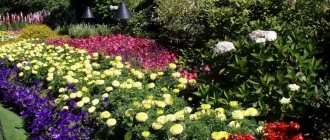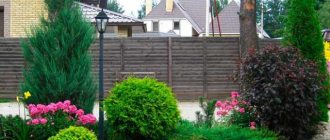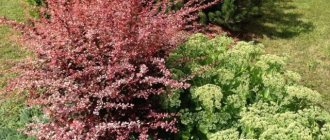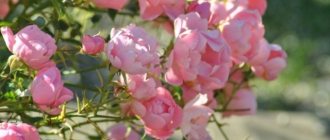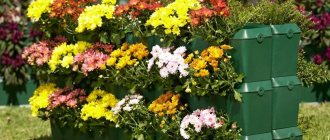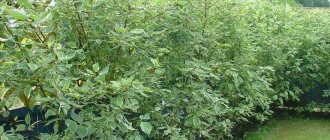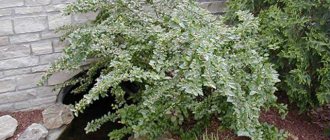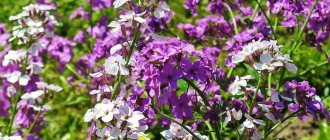Sun-loving perennials for the garden are responsible for the positive mood of dacha owners and delight neighbors and passers-by with their blooms. When creating sunny flower beds, it is required that the inhabitants of the flower bed do not lose a portion of sunlight. The correct combination of crops and selection of growth are valued. This way, tall individuals will provide short specimens with a successful background. When creating a flower garden in the sun, what to plant from perennials is not an idle question for gardeners.
Distinctive features of perennial crops include:
- decorativeness;
- duration of the growth period;
- there is no need to sow and replant for several years.
On a note. During this time, green plantings retain their decorative properties. Most perennial plants are easy to care for and bloom earlier than annuals.
Sun-loving perennials
Scope of application of perennial flowers:
- hanging flowerpots;
- volumetric garden figures;
- floral sculptures for site decoration;
- multi-storey landscape objects.
On a note! The greenery of planting sun-loving flowers for the perennial garden, blooming all summer, when decorating the front garden will serve as a plan for other crops or as a decorative application. They complement each other perfectly due to differences in color, shape and size.
Choosing perennials
Summer residents note the benefits of growing perennials:
- Preserving the beauty of the flowerbed for a long time.
- The grade of a flower bed affects the time frame of its existence. In addition, there is no need to replant and sow rockeries or mixborders.
- The winter hardiness of perennials guarantees that plants can overwinter in the garden without special protection. In addition, crops bloom much earlier due to the development and strength of the roots.
- Minimum expenses for the annual flowering of the flower bed.
Colorful and graceful chamomile
You can grow many exotic plants, but if you don’t have common chamomile (Leucanthemum vulgare Lam) in your garden, then who will smile so uniquely joyfully at the sun in the morning? And who will answer our main question about love and not love? No, you can’t do without chamomile. Especially in the presence of Turkish poppy and blue cornflower, chamomile creates a field color that will pleasantly refresh the area, making it dear to the heart and pleasing to the eye. Wood mallow, chamomile aster, scabiosa, yarrow, bellflower and meadow sage go well with common cornflower (chamomile).
This plant is often used in folk medicine. However, you should not use it haphazardly, like any other medicines.
In fact, a white chamomile flower will always find a pleasant neighborhood. Chamomile is a perennial that can be 15 or 80 cm in height. Its stem can be branched or simple single. The chamomile inflorescence has the shape of a basket. The plant blooms in June-September. This plant reproduces not only by seeds, which each specimen produces in quantities of 2-5 thousand, but also by vegetative means. Chamomile can overwinter in the form of a rosette, and the next year it will already form flowering stems.
Recent Entries
5 working ways to use tar in the garden 7 indoor plants that help you get married even in adulthood Indoor plants that can bloom in trouble
Flowers for a sunny garden
Long-flowering perennials for the garden
Summer residents are interested in which flowers are best to plant in sunny flower beds in the fall. Perennials grow well when sown before winter:
- Viola. Almost every gardener is familiar with another name for the plant - pansy. Low-growing crops are characterized by a rich range of colors: blue and white, yellow and black, spotted red. The culture loves fertile soil - loam, without stagnant moisture, and is responsive to frequent fertilizing with saltpeter and superphosphate. Fresh manure is prohibited. To prolong flowering, get rid of the seed pods.
Viola
- Astilbe. A herbaceous perennial from the Kamnelovaceae family, it varies in size: from dwarf to tall. The culture is crowned with paniculate inflorescences of different colors. The plant likes growing in rich humus soil, regular watering, and eliminating flower stalks at the end of flowering. To protect from frost, bare roots are covered with spruce branches or agrofibre.
- Hyacinths. When caring for flowers, it is important to apply fertilizers in a timely manner, especially dry ones, immediately when the first shoots form. At the same time, the soil is loosened. At the budding stage of hyacinths, a second root feeding is carried out with liquid fertilizer. If the plants have flowered, it is time to carry out the third feeding. You will need to moisten the soil while the bulbs take root. During drought, shoots are watered abundantly.
- Delphinium. Seeds are planted in autumn or spring. Practice seeding density for a luxurious flower garden. The bed is sprinkled with a 4 mm layer of soil. Types of delphinium: holostem and Persian, hybrid and large-flowered. The crop needs systematic watering, which is combined with careful loosening of the soil.
On a note. Proper root irrigation of delphinium will protect against the development of powdery mildew.
- Nivyanyk. Other names for white chamomile, popovnik, roman herb, white flower. White chamomile will decorate a plot outside the city. The unpretentious culture is frost-resistant. Popovnik grows in one place for up to 7 years, if you properly care for the plant.
- Peony. The light-loving crop likes loose soil. The plant can grow in the garden for more than 25 years. When planting, take into account that the peony does not tolerate drafts and grows strongly. A close distance from the wall of the house is not the best place for planting: excessive rainfall will provoke rotting of the root system.
- Rudbeckia. Looks like chamomile. The petals have different colors: yellow and lemon, orange and brownish. The culture is not demanding on soil. Rudbeckia feels good on moist, well-groomed soil. Responds to fertilizing with nitrophoska and potassium sulfate.
- Chrysanthemum. Plant growth varies from 35 cm to 1.5 m. The bushes have a variety of colors and shades.
- Kniphofia. The African guest has successfully taken root in Russian summer cottages. The height of the exotic is 120 cm. The spike-shaped inflorescence of the plant looks like a huge two-colored cone. The flower is friends with sedum, echinacea, and yarrow. Perfectly shades short sun lovers.
- Turkish poppy. The crop grows without replanting for several years on any type of soil. Poppy petals are painted in scarlet and pink tones. There are also varieties with orange and snow-white shades. The poppy blooms in the last ten days of May and the first days of June.
Turkish poppy
How to understand that flowers are suffering from heat
Every experienced gardener knows where the shady corners of his plot are and where the sun reigns all day. As a rule, these are places in front of the porch, along the entrance path, on the lawn or next to the entrance. They are illuminated most of the day, have no artificial or natural shading and are poorly supplied with water.
Most plants, finding themselves in such conditions, quickly begin to dry out, lose their decorative properties, become smaller, and then die. Some of them manage to bloom, but the buds are small and fade faster than expected. Only primroses develop well in such areas, since in the spring the ground is still saturated with moisture, and the abundance of light stimulates the rapid growth of plants.
So, if more than half of the seedlings in your flowerbed die, the remaining ones dry out, wither and develop poorly, then there is too much sun here. Sunburn on leaves and inflorescences can easily be confused with numerous fungal and bacterial diseases, so first rule out this possibility. If the plants are healthy, no soil pests were found, and the flower garden looks very sad, then something needs to be changed.
- Diseases and pests of annual flowers: how to recognize and fight?
We tell you which annuals are susceptible to diseases and insect attacks and how to save the plants.
Drought and heat tolerant perennials
Important! Living in the city and infrequent visits to the dacha only on weekends or holidays are fraught with moisture deficiency, which perennials will feel in the dry and hot summer season.
Unpretentious and long-blooming perennial flowers for the garden
Drought-resistant flowers for a flower bed in a sunny area will solve the problem. There are many drought-resistant plants for the garden, including perennials. These are drought-resistant plants, bushes and trees that grow in the sun with insufficient watering.
Groundcovers are drought-resistant perennial flowers that bloom all summer and decorate sunny beds.
Interesting! Ground cover plants are indispensable if you need to camouflage a hopeless area where nothing wants to grow under the scorching rays of the sun and when there is a lack of watering.
Among the heat-resistant flowers for the flower bed are:
- Sedum. Includes representatives of succulent perennial plants that are attractive in appearance and require almost no watering. Succulents obtain water from the air and accumulate it in the thickness of the foliage. Plant growth occurs rapidly, problem areas disappear quickly.
Popular varieties of ground cover plants include:
- false and caustic;
- white and bent;
- Kamchatka and Lydian sedum.
- Irish moss. A dwarf perennial that will ideally fill gaps between tiles or stones, paths in a sunny area. You will need to water the plantings immediately after planting. Tolerates any weather conditions: heat and frost, light and rain. The peak of bryozoan decorativeness falls in July, when the crop blooms with miniature delicate flowers. The plant is resistant to trampling.
- Chistets woolly. The culture is popularly called hare or sheep ears. The drought-tolerant perennial has oblong leaves that appear covered in silver-gray fur. When flowering, the chistets appear blue, pinkish or lilac flowers, which are collected in an inflorescence in the shape of a spike.
Important! To give the perennial a decorative appearance and avoid a sloppy appearance, the chickweed is pruned short at the beginning of the growing season.
- Phlox subulate. Creates a huge pillow of small, needle-like leaves. The heat-resistant perennial blooms at the end of spring. Numerous small flowers of various shades cover the bush. Plantings are carried out on sunny rockeries or hills, which are bordered by low borders.
- Monetary loosestrife. The crop likes to be watered, but it does well without watering. When there is no periodic watering, loosestrife with yellowish-colored leaves in the sun becomes more saturated in color. The perennial looks great on slopes, hills, and also as a grassy lawn cover.
Monetary loosestrife
- Gypsophila. Perennial flowers among drought-resistant plants will help maintain a good mood for a long time. Tumbleweed, as it is popularly called, belongs to the Clove family. The growth of the branched stem is 20-50 cm. The flowering period of gypsophila falls at the beginning of June and lasts until the weather gets colder. Snow-white pink flowers that gather in paniculate inflorescences resemble an airy cloud. The crop is propagated by seed, directly into an open garden bed.
- Daylilies. They are unpretentious and drought-resistant. The foliage is pleasingly decorative after flowering. The variety of daylilies is amazing in size and color. Today, Russian breeders are working on developing remontant (blooming again) varieties.
- Yarrow. Nowadays it is easy to buy highly decorative plant varieties with different colors. The culture is unpretentious in care. Reproduction of yarrow by self-sowing leads to clogging of the garden plot and is a problem for summer residents. Prefers the sunny side of the flower garden.
Yarrow
- Spurge. The perennial is able to withstand drought for a long period. Euphorbia is used to decorate a hill or rock garden. A plant suitable for borders, tall varieties serve as a focal crop for a sunny flowerbed.
The following varieties of milkweed are popular among gardeners:
- multi-flowered and fringed;
- almond-shaped and capitate;
- cypress.
- Gatsaniya. A distinctive feature of a flower that pleases in summer is its wide color palette. Therefore, many designers call the plant a chamomile from South Africa.
Important! Gazania has 40 varieties that grow in warm climates. Some species are grown in cold areas, however, as an annual crop.
Due to the ease of care, the crop is cultivated:
- in pots;
- in rock gardens;
- in containers on the loggia;
- as a border.
Purslane - a colorful rug for your dacha
The name purslane (Portulaca olerácea) comes from the Latin word "portula", meaning "gate". Where is the gate in this plant? It turns out that its seed pod swings open as if a small gate is opening, opening the way for future rugs. After all, that’s what people call purslane – rugs. Today in some European countries it propagates by self-sowing and grows as a field weed. Purslane captivated our gardeners with its tenderness and naive, unpretentious beauty. He is a welcome guest in every flowerbed. It is loved for its long and abundant flowering from June to August.
In the Middle Ages, it was grown by the Arabs, calling purslane a “blessed plant.” It was believed that he could cure all diseases. Purslane was also in demand during the time of Hippocrates. Severe wounds and snake bites were treated with purslane leaves and flowers
Most often, purslane is used as a border plant and on alpine hills. It has small cylindrical fleshy leaves of green or slightly reddish color. Flowers with a diameter of 2.5-3 cm have a variety of colors: yellow, red, purple, pink, orange, etc. Plants with double (“Double Mix”), white (“White-flowered”), and purple (“Splendence”) flowers attract the attention of specialists. There are even those whose corollas are painted in two colors.
You can learn more about how to grow purslane from the material:
Decorating a flower bed in the sun
In order for a flowerbed in the sun to have a unified style, choose what to plant. In addition, the flower garden must comply with the rules:
- Minimalism. Plant a maximum of 3 varieties of plants per 1 m2 of area.
- Long-lived crops are preferable.
- The soloist occupies the central place and dominates the flowerbed.
- Color palette. The tones determine the style, thematic idea and wishes. The softness of the colors enhances the beauty of individual crops. The combination of blue and white shades has the effect of glowing from within, the violet-blue color gives off coldness and nobility, the pink tone gives off romanticism, the red-yellow color is responsible for the audacity and brightness of the images.
Perennial flower bed
- Foliage is valued no less than flowers. Most of the crops are decorative and remain attractive with the arrival of the autumn season.
- Maintaining optical balance, softening contrasts.
- Spontaneous decisions are welcome.
- They prevent perennial crops from going wild and rejuvenate old bushes.
- Viability of perennials in the flower garden. Partners should not suppress each other.
- Candidates for the flower bed are selected according to the growing conditions.
- Follow the requirements for landing a single individual.
- Plan the design of the edge of the flower bed in advance. Low-growing varieties that cover clearings are suitable. Geranium, dwarf spirea, lungwort, and heuchera will help out.
Perennial flowers from A to Z
Schemes of simple flower beds are:
- Permanent compositions with a clearly defined geometric pattern, where crops bloom at the same time and are separated from each other;
- Non-permanent compositions in which crops are grouped and the flowerbed fits into the garden decor. The order of flowering of perennials will increase the decorative life of the flower bed.
On a note! Regardless of the form, there is a main pattern in planting plants in a flower garden. In the center there are flashy and tall specimens, the middle part is the location of medium-sized specimens, and low perennial long-flowering plants or ornamental grass take place on the edge.
Shaggy and fragrant monarda
If you know a lot about good drinks, then try adding just one leaf of Monarda to a cup of any tea, and you will suddenly feel the exquisite taste of Earl Gray. Experts say that this plant can invigorate a space with its presence alone. Monarda is a “hooligan” among “intelligent” flowers with neat hairstyles. Her tousled hair, however, is always appropriate. She herself will not get lost against the background of other plants, but she will not allow herself to drown out anyone.
Monarda flowers can be double or simple. All types of this plant have an exceptional aroma, which is emitted not only by flowers and leaves, but also by stems and even rhizomes. “Shaggy” flowers of lilac, crimson, pink, red and even white appear in July. Abundant flowering does not stop until the very end of summer.
Monarda reaches a height of 120 cm. There is also a dwarf form that does not grow more than 20-30 cm. The leaves of the plant can be smooth or rough, depending on the variety
LiveInternetLiveInternet
Natali-Natalka
all posts by the author
A ridge is a bed of flowers that borders garden paths or divides zones. Under the sun's rays, perennials bloom with special splendor and beauty. The choice of their species and varieties is large enough so that every gardener can find plants of the color, shape and flowering period that suit him.
The width of the flower ribbon should not exceed 3 meters. The best places for many abundantly flowering garden perennials are open to the sun. Here are such noble long-flowered flowers as lilies,
peonies
and phlox,
can show themselves in all their glory. They tolerate short-term daytime shade quite calmly, but longer shading and even openwork shade from trees and shrubs seriously affect their prosperity.
Large, lushly flowering breeding varieties of sun-loving perennials are especially sensitive in this regard. For them, the most optimal are ridges with fertile and sufficiently moist soils.
In order for the ridge to be attractive even after flowering, evergreens should be planted when installing it.
The design of sunny areas depends entirely on your taste and, of course, on the actual capabilities of your garden. Small flower beds in the front garden can be designed no less impressively than a ridge stretched along a garden path, a “ribbon” of perennials along the border of the garden, or a flower island in the center of the lawn.
When arranging a ridge of tall flowers, a edging of low and contrasting plants looks beautiful
In any case, it is very important to skillfully combine plants according to their growth. Such tall and lushly flowering crops as rosemary, mallow and lupine are most advantageous in the “far” section of the flowerbed. Their flower stalks will rise above the shorter crops in the foreground, which in turn will cover the bases of their shoots.
To create a beautiful transition between a ridge open to the sun and a lawn, terrace or garden path, compact cushion-shaped perennials - bush aster,
blue carnation
or Carpathian bell.
They will reliably cover the soil with a dense leaf cover, which will decorate the edges of the ridges at the time when flowering ends. The most important advantage of sun-loving perennials is their colorful outfit. Their multicolor arrangement looks best against a calm background of trees and shrubs.
To achieve certain color combinations, it is necessary to take into account the periodicity of development of each individual crop. Peak flowering of perennials occurs from June to August. At this time, such large yellow-colored “sun worshipers” as rudbeckia,
heliopsis,
coreopsis,
helenium,
as well as juicy red monarda
and kniphofia.
Calm white and blue notes are added to this color scheme by various types and varieties of bluebells and spurs (delphinium).
You can extend the flowering season in a sunny garden with the help of such attractive autumn-flowering crops as sedum
garden chrysanthemums
or autumn asters.
Most perennials will bloom again in the fall if they are pruned in a timely manner after the main flowering period. Such plants include delphinium,
stenactis,
catnip
and scabiosis.
The choice of spring sun-loving perennials is somewhat smaller. In April the rhinestones bloom,
meadow lumbago
and adonis.
In May they are joined by daylily, catnip and peony. You can enrich your spring palette with bulbous plants such as daffodil,
tulip
and hazel grouse.
Since bulbous crops become unattractive after flowering, they should not be planted in the foreground of garden beds. An easier-to-maintain option for a large flower garden is a sunny lawn. Wild perennials - cornflower,
yarrow,
meadow sage
- thrive here in colorful company with herbaceous plants. Such lawns are sown with a special seed mixture or individual crops are planted on an existing lawn.
Flowerbed of sun-loving perennials Soft and delicate colors dominate this flowerbed of perennials.
Read further at the link: https://flowers.cveti-sadi.ru/mnogoletniki-dlya-klumb-otkrytyx-solncu/
